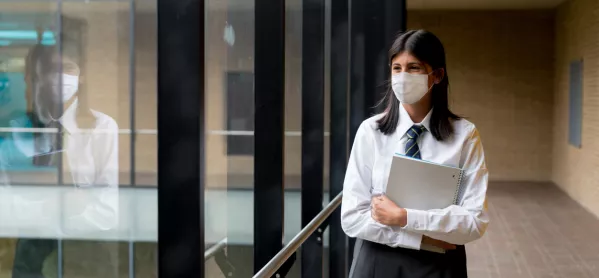The delay in imposing lockdown measures until this week means it will be harder to keep schools open, a member of the government’s Scientific Advisory Group for Emergencies (Sage) said this morning.
Speaking on BBC One’s The Andrew Marr Show, Professor Jeremy Farrar, director of the Wellcome Trust, added that any extra effort to reduce transmission in secondary schools over the next four weeks will help to keep the Covid-19 R (reproduction) rate below one and keep schools open.
He said: “Because we have delayed the onset of the lockdown, it does make keeping schools [open] harder. We know the transmission, particularly in secondary schools, is high.
Latest data: ‘Steep’ rise in Covid among secondary school students
Independent SAGE: Experts call for students to wear masks in classrooms
Coronavirus: ‘Schools must stay open,’ teachers told
NEU: Close schools for four weeks to stop Covid, say teachers
“Personally, I think this is definitely the lockdown to put in place now. But if that transmission, particularly in secondary schools, continues to rise, then that may have to be revisited in the next four weeks in order to get R below one.”
Coronavirus: Keeping schools open
If the “circuit-breaker” lockdown had been implemented, he said “the transmission would not be at today’s level, and it would have been possible to keep schools open, whereas I think that is at question now”.
Asked whether all students aged 12-13 or above should be wearing masks at school, he agreed and said that masks have a role to play at schools, especially with good ventilation not always possible.
He said: “Masks could play a role in secondary schools - because secondary school is where transmission is occurring now, as well as in the general population
“Anything we can do to reduce transmission in secondary schools over the next four weeks would go a long way in helping us get R below 1 and keeping the schools open, which is a priority for all of us.”
Meanwhile, former chief scientific adviser Sir Mark Walport told Sky’s Sophy Ridge on Sunday that it could take longer to bring the R rate down below one with schools open.
He said: “The lockdown is not as severe as it was first time around, so the only way to know is to see how quickly the new cases start dropping.
“As we know, there’s a lag between the case developing, hospitalisation and the horrible consequences of severe illness or death.
“It’s unlikely this time to come down quite as fast as it did during the first lockdown because we have got schools open.”




